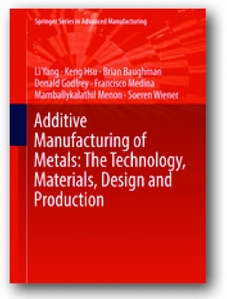
The book topic, focusing on metals, is relevant and highly marketable due to the current interest in this area. However, the book is more of a general look at Additive Manufacturing (AM) and does not put as much detail into ‘Metals’ as one might expect from reading the book title.
For instance the book is 168 pages, but only has 14 pages dedicated to metal AM. There are an additional 16 pages in Chapter 3 dedicated to metal properties, but this chapter could quite easily be extracted from a non-AM related book focusing on other metal processing technologies. There are other related metal AM sections scattered across the book (for instance, when discussing design), however, not enough to merit a book entitled Additive Manufacturing of Metals.
To me, the book seems a bit disjointed in regards to topics covered and incomplete. For instance, why is there a chapter dedicated to Electron Beam Manufacturing (EBM) but none to Selective Laser Melting (SLM)? SLM is by far a more widely used metal AM process throughout the world, much more compared to EBM. Some aspects of SLM are covered but are scattered throughout the book, i.e. placed in Chapter 5.5 in design considerations; the topics covered here should not fall within a ‘design considerations section’ but rather a dedicated chapter to SLM-related processing conditions.
Overall, the book covers some interesting topics that are not included in other AM books; however, in the book topics, structure and detail related to metal AM are incomplete. People will buy this (but perhaps not intermediate to advanced users of this technology) within industry and academia, but the subject area has more potential to be covered in a more detailed and logical manner.


